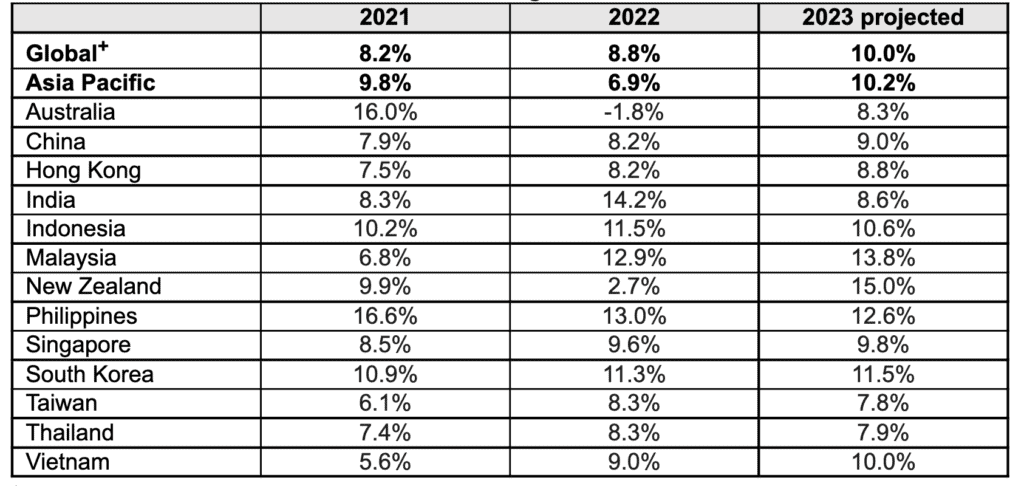Healthcare benefit costs in Asia Pacific is set to increase by 10.2% next year, said WTW recently when releasing results of its 2023 Global Medical Trends Survey.
According to the firm, the survey found little relief in sight with close to three-quarters of insurers (73%) in the region anticipating higher or significantly higher increases in healthcare benefit costs in Asia Pacific over the next three years.
Growth trends: Healthcare benefit costs in Asia Pacific

Worldwide inflation and a rise in healthcare use in the wake of the pandemic are delivering a one-two punch on medical costs around the globe, said Cedric Luah, Head of Health and Benefits International, WTW.
“The bottom line is that these large increases are unsustainable,” he noted. “Employers and insurers will need to develop strategies and solutions to rein in costs to more manageable levels.”
Survey highlights
- The leading driver of medical costs, according to insurers, continues to be overuse of care (81%) due to medical professionals recommending too many services or overprescribing.
- Insured members’ poor health habits (58%) is the second leading driver. The underuse of preventive services (46%) is also a significant cost driver and increased year-over-year due to, in part, the avoidance of medical care during the pandemic.
- Insurers in Asia Pacific identified cancer, cardiovascular and musculoskeletal as the top three conditions by cost, identical to last year’s findings.
- Cancer continues to be the leading condition in terms of incidence of claims and cost. Mental health conditions such as anxiety and depression continue to take a toll on employees.
- Insurers expect mental and behaviour disorders to be among the top five fastest-growing conditions by incidence of claims in this region in the next 18 months.
- Insurers have also ranked treatments related to reproductive system as one of the top five conditions that is affecting medical costs this year.
Healthcare and DEI
The pandemic has also highlighted health disparities among different employee groups, promoting employers to place a greater emphasis on diversity, equity and inclusion (DEI) in their healthcare strategy, WTW said.
Exclusions persist for conditions in areas related to DEI, a key priority and board-level issue in many organisations, Eva Liu, Head of Strategic Development, Health & Benefits, Asia and Australasia, WTW, pointed out.
These exclusions range from fertility treatment, HIV/AIDS, treatments related to menopause and other mental and behavioural health including but not limited to Autism, ADHD and so on, she added
Employers should consider how they can bridge these coverage gaps and help deliver more equitable health outcomes across different employee groups, Liu advised.
“Healthcare affordability remains top of mind for insurers, employers and employees,” Liu said. “As we move into next year, we see a challenging year for employers in trying to balance the convergence of rising medical trend, salary pressures and the need to continue to make progress on DE&I initiatives globally, all while dealing with potential recessionary markets.”
Medical trends in Singapore driving medical cost inflation
In Singapore, the country’s core and headline inflation figures continue to rise with projected 2023 medical inflation roaring to 9.8%, WTW said.
As a premier medical tourism hub, Singapore being one of the first few Asia countries to lift the travel ban, experienced a large influx of overseas patients seeking previously deferred elective treatment, WTW observed.
The fast-ageing workforce coupled with heavier chronic disease burden remained key contributors to the rise in healthcare costs, WTW pointed out.
Other contributing factors include overuse of care by insured members, as well as over-treatment or overprescribing by medical practitioners, the firm added.
Though not expecting to benefit from short term results, organisations are now more open to preventive care and wellbeing programmes, adopting a more strategic and longer-term view to tame their medical cost increases with more employers requesting to integrate wellbeing as a core component of their healthcare benefit programmes.




